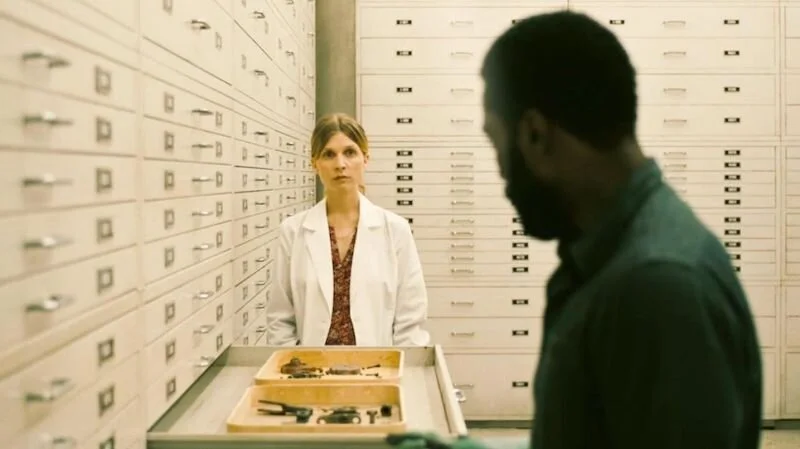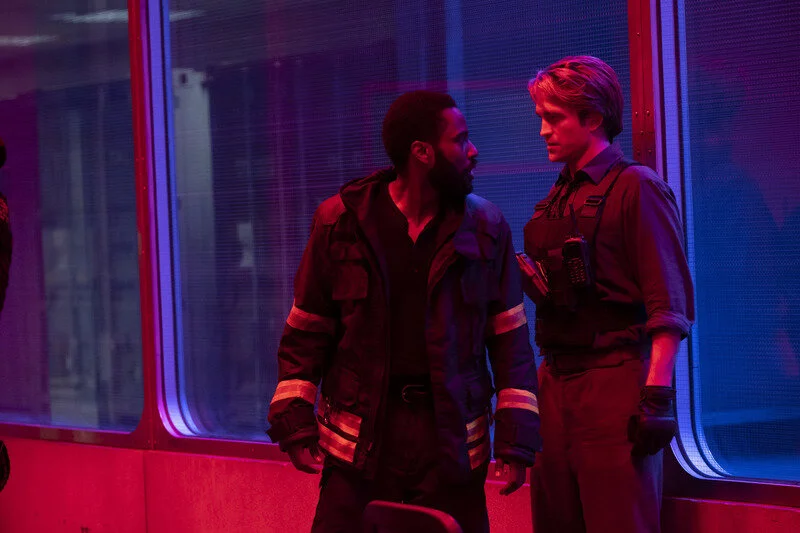The Science of Tenet: Entropy, Inversion, and the Turnstiles
Tenet is the latest time-warping, mind-knotting movie by Interstellar and Inception director Christopher Nolan. The movie, in brief, is about a CIA agent traveling through time to prevent the destruction of the world as we know it. For those who have seen the film, there is a general consensus that it could be worth a few screenings to fully make sense of all things happening simultaneously in the movie. And you might be wondering – how far from reality are the scientific concepts found in the film?
“I thought it was mind-numbing,” beamed Donald Innocent-Ike, Tech Square ATL (TSQATL) Social Club member. A graduate student at Georgia Tech, Innocent-Ike also works as an Equity Research Associate at Truist, and is an enthusiastic fan of Christopher Nolan’s films. “The entire idea of the film is based off of the inversion of entropy.”
While Nolan took many creative liberties in writing Tenet, he was advised by theoretical physicist Nobel Prize Laureate Kip Thorne, to anchor the story in the real laws of physics and time.
Whether you’ve seen the film or are just Tenet-curious, here are three reality-based scientific concepts referenced in the movie.
*Warning: the following might contain movie spoilers!*
Entropy
One of the real-life scientific concepts that anchors Nolan’s trope of time travel is the law of entropy, which is most simply defined in thermodynamics as the measure of disorder. As a physics refresher on entropy, think about when you drop a water balloon. As long as time is moving forward, the water balloon headed for the ground will eventually break (becoming more disordered), but it will never return to its original state (becoming less disordered) as a whole balloon.
According to the second law of thermodynamics, entropy can only stay the same or increase as time moves forward – it can never decrease. In the film, Nolan explores the concept of inversing entropy. Enter: the “inversion” concept.
Inversion
In good old time travel films, people can pick the exact point in time they want to travel backwards. This is not the case for Tenet. In order to travel back in time – let’s say, last week – the characters must live the entire sequence of events during that week – in reverse. This process is called “inversion,” based on the Nolanite concept of inversing entropy. So how do the characters and objects “invert?” By using a system, of course.
A device that manipulates entropy
In the movie, a system called “the turnstiles” is used to allow for people and objects to be “inverted.” When it comes to a real-life device that manipulates entropy in a system, like “the turnstiles,” there’s always the household refrigerator. A refrigerator is a device we use to stabilize the entropy of things stored within so that they stay fresher, longer. Because entropy increases when temperature increases, things do not have as much entropy when they are cooler. Although refrigerators do not inverse entropy or allow for items (or people, if you step inside of yours) to travel back in time, refrigerators do slow down entropy, keeping your ice cream frozen and veggies crispy.
Did You Know?
There is an ancient palindrome that seems to be a reference for Christopher Nolan when writing the movie. Sator Square from the Duomo of Siena, Italy is a five-line palindrome, rendered in Latin, of five words: SATOR, AREPO, TENET, OPERA, and ROTAS, which you can read in four directions. Instances of the Sator Square have appeared all over Europe, dated from the second century all the way to the 14th.
“What’s interesting about this movie is that you can probably watch it from the middle,” Innocent-Ike shares with a laugh. “Because if you think about [the reference to] the palindrome, it doesn’t matter what side you look at it from. So I personally think that maybe [Nolan] wants us to start watching [the film] from the middle, because it doesn’t matter. If you start from the middle to the end and watch it backwards, you’d still get the same [story].” He’s seen the movie four times in order to understand it better.
Have you seen the movie? How well did you keep up with everything that went on, and what’s still confusing about it for you? Let us know your thoughts in the comments below.




